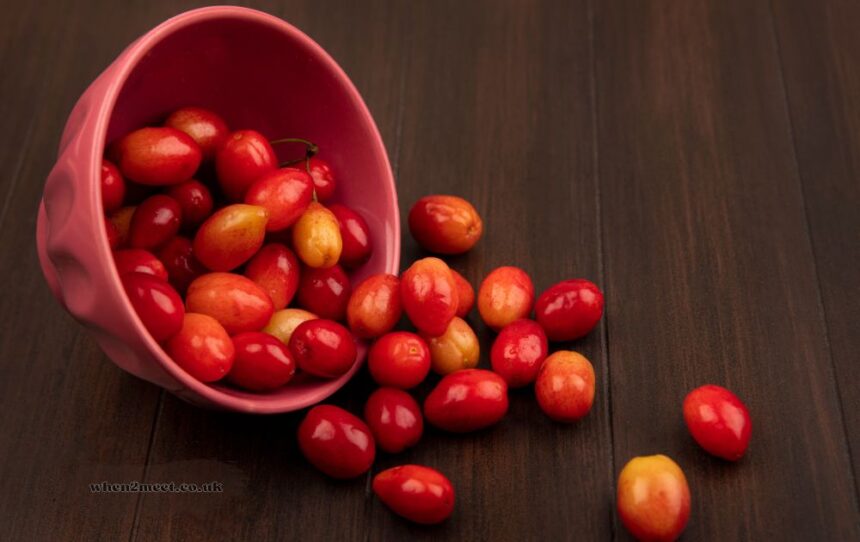Among nature’s most delightful surprises, the žižole often called the jujube or red date stands out as a small yet powerful fruit. With its golden-brown hue and soft sweetness, this ancient fruit bridges generations of tradition, wellness, and nourishment. Whether found in Mediterranean gardens or Asian herbal shops, žižole has quietly maintained its reputation as a symbol of vitality and balance.
The Origins and Cultural Roots of Žižole
Žižole traces its origins back thousands of years, deeply woven into the agricultural and cultural fabric of Asia and the Mediterranean. Believed to have first been cultivated in China over 4,000 years ago, the fruit traveled through trade routes, finding new homes across Europe and North Africa. In Croatia and the Dalmatian coast, žižole holds a special place, celebrated during autumn harvest festivals for its unique flavor and health-giving qualities.
A Glimpse into the Ancient Past
Historical records reveal that the fruit was cherished by emperors, philosophers, and healers alike. In ancient Chinese medicine, the jujube was seen as a “fruit of life,” used to restore energy and improve mental clarity. Meanwhile, in the Mediterranean, it became a comforting home remedy used in teas, syrups, and desserts for both body and soul.
Where Žižole Grows Today
Today, žižole trees flourish in warm, sunny climates across Asia, southern Europe, and parts of the Middle East. Their resilience to drought and poor soil conditions has made them a favored crop among sustainable farmers. Countries like Croatia, Italy, and Greece proudly grow žižole, where they remain a cherished local delicacy, often enjoyed fresh or preserved.
The Appearance and Taste of Žižole
At first glance, žižole looks like a small, olive-shaped fruit with a smooth, shiny skin that ripens from green to a deep reddish-brown. When bitten into, its flesh offers a crisp texture and a delicate, honey-like sweetness similar to apples but softer and more fragrant. When dried, it transforms into a chewy, date-like delight that carries both sweetness and warmth.
Nutritional Composition of Žižole
Despite its modest size, žižole is a treasure chest of nutrients. It’s packed with vitamin C, antioxidants, fiber, potassium, and flavonoids that promote overall well-being. The low-calorie content makes it an ideal snack for those seeking both flavor and nourishment without guilt.
Health Benefits of Žižole
Žižole is naturally rich in vitamin C offering a powerful boost to the immune system and aiding in the body’s natural repair processes. Regular consumption helps your skin glow and strengthens your resistance to seasonal illnesses.
Boosts the Immune System
Thanks to its antioxidant content, žižole helps the body combat free radicals, protecting cells from premature aging and improving overall immune function.
Promotes Better Digestion
The fiber in žižole supports a healthy digestive system. Whether eaten raw or dried, it helps regulate bowel movements and encourages gut balance.
Supports Heart Health
Potassium and antioxidants in žižole work together to support cardiovascular health. They help lower blood pressure, reduce cholesterol levels, and improve circulation.
A Natural Stress Reliever
Traditionally, žižole tea has been used to calm the mind and promote restful sleep. Its natural compounds help reduce anxiety, soothe the nervous system, and support emotional balance.
Žižole in Traditional Medicine
In traditional Chinese and Middle Eastern medicine, žižole has long been valued as a natural tonic. Healers often recommended it to strengthen the spleen, calm the spirit, and enhance longevity. Its seeds were even used in herbal remedies aimed at improving mood and easing insomnia.
The Role of Žižole in Modern Nutrition
Modern dietitians now echo what ancient healers already knew žižole is a wholesome addition to a balanced diet. As wellness trends shift toward natural and minimally processed foods, žižole has gained attention as a superfruit, rich in micronutrients and adaptable to many lifestyles, including vegan and gluten-free diets.
How to Eat Žižole: Raw, Dried, or Cooked?
Žižole can be enjoyed in multiple forms. Fresh ones are crisp and slightly tart, making them great for snacking. Dried žižole, on the other hand, is chewy, rich, and sweet perfect for desserts or teas. Some people also use them in cooking, adding a natural touch of sweetness to stews and baked goods.
Creative Recipes Using Žižole
Žižole’s gentle sweetness and rich aroma make it a delightful ingredient in both traditional and modern recipes. You can enjoy it in soothing teas, comforting jams, or as a naturally sweet snack. When brewed, žižole tea offers warmth and calmness, while žižole jam pairs beautifully with bread or pastries. Dried žižole also makes for an energizing trail mix when combined with nuts and seeds, adding both flavor and nourishment to your day.
Cultural Symbolism of Žižole Across Regions
In Croatia, žižole is more than just food, it’s a symbol of abundance and gratitude. Families gather during harvest season to share the fruit, turning it into jams or brandy. In China, it represents harmony and good fortune, often given as a gift during celebrations.
Sustainability and Cultivation Practices
The žižole tree’s ability to thrive in arid, low-water environments makes it a symbol of sustainable agriculture. Its long lifespan and minimal resource needs contribute to eco-friendly farming practices, offering hope in the face of climate change challenges.
The Future of Žižole in Global Markets
As people become more health-conscious and seek natural alternatives to processed foods, žižole is finding its way into global markets. From organic stores to wellness blogs, it’s becoming recognized not just as a traditional fruit but as a timeless source of nourishment and balance.
Conclusion
Žižole is a quiet reminder that nature often hides its greatest treasures in simplicity. From its ancient roots to its modern-day revival, this golden fruit continues to inspire wellness, culture, and connection. Whether enjoyed fresh from the tree or steeped in a soothing tea, žižole carries with it the warmth of centuries a fruit that feeds both body and soul.
Read More interesting topic:Exploring Gentle Ways to Boost Wellness: wutawhealth the tricks
FAQs about žižole
1. What is žižole?
Žižole, also known as jujube or Chinese date, is a small, sweet fruit known for its health benefits and cultural significance.
2. How do you eat žižole?
It can be eaten fresh, dried, or cooked into jams, teas, and desserts.
3. Is žižole good for sleep?
Yes, žižole contains natural compounds that help relax the nervous system and promote restful sleep.
4. Where can I find žižole?
You can find it in local markets across southern Europe and Asia, or in specialty stores that sell dried fruits and herbal products.
5. Why is žižole considered a superfruit?
Because it’s rich in antioxidants, vitamins, and minerals that support immunity, heart health, and mental well-being.



